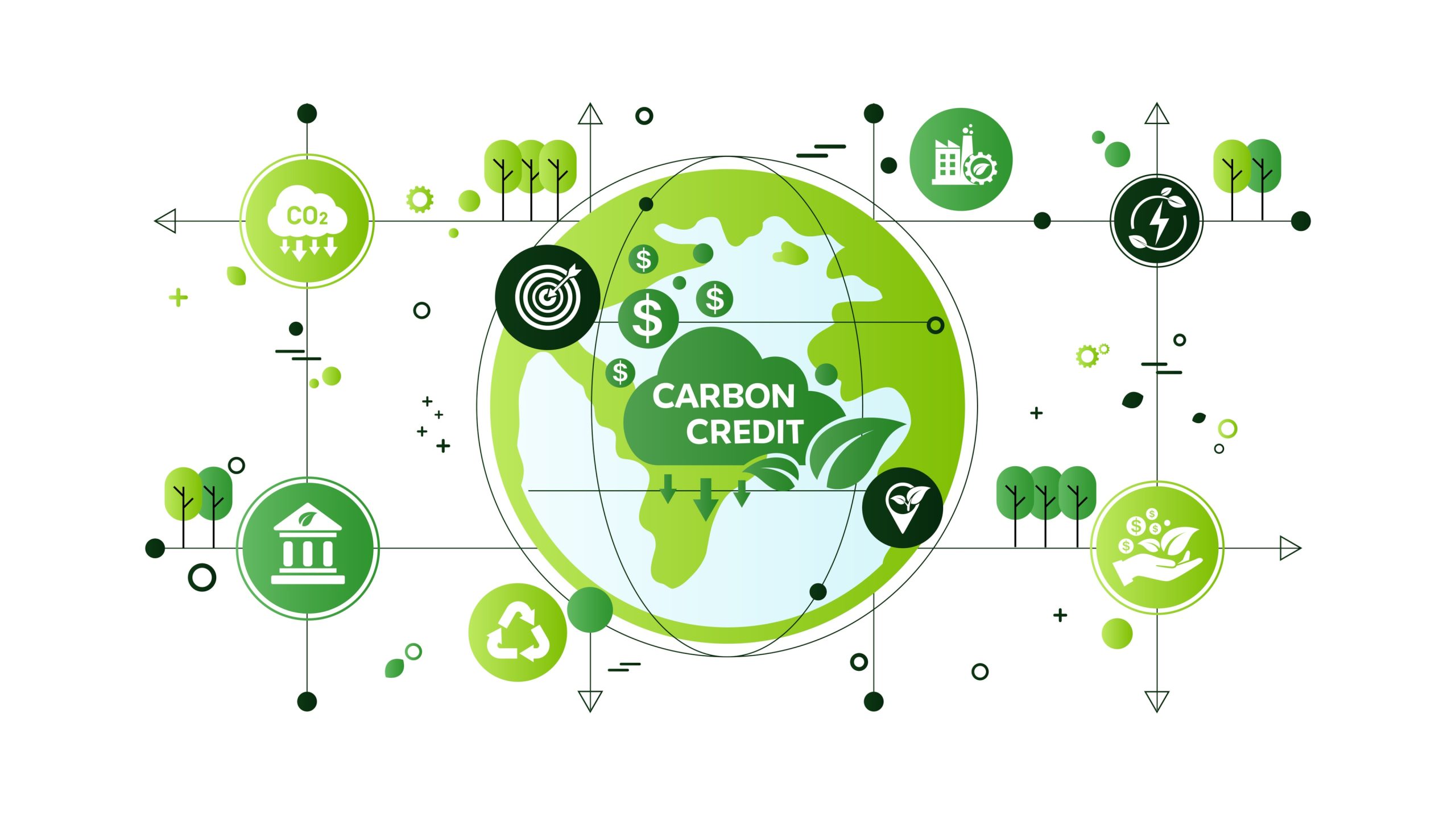Understanding Your Carbon Footprint
What is a carbon footprint?
A business carbon footprint measures the total greenhouse gas emissions generated by business activities. This includes emissions from energy consumption, transportation, manufacturing processes, and waste generation. Understanding your carbon footprint is essential for developing strategies to reduce carbon footprint and aligning with the UK’s net zero target.
By assessing your carbon footprint, you can identify high-emission areas and implement changes that reduce your environmental impact, improve efficiency, and potentially lower operating costs. Tracking and managing your carbon footprint is also crucial for meeting regulatory requirements and responding to increasing consumer and stakeholder demand for sustainability.
What are greenhouse gas emissions?

Greenhouse gas emissions are the primary cause of global warming and climate change. They include carbon dioxide (CO2), methane (CH4), nitrous oxide (N2O), and other gases that trap heat in the atmosphere. These emissions originate from numerous human activities, including the combustion of fossil fuels for energy, industrial manufacturing processes, and agricultural practices.
Reducing greenhouse gas emissions is critical for slowing the rate of climate change, protecting ecosystems, and ensuring a sustainable future. Businesses play a significant role in this effort by adopting cleaner technologies, improving energy efficiency, and supporting renewable energy initiatives. Understanding the sources and impacts of greenhouse gas emissions is the first step toward effective mitigation of climate crisis.
Calculating Your Carbon Footprint
How to calculate your carbon footprint as a small business
Calculating your carbon footprint involves gathering data on your energy consumption, utility bills, travel data, and other relevant activities. This data provides a baseline from which you can measure your progress in reducing emissions.
Tools like the Business Carbon Calculator can help estimate your carbon footprint calculating your company’s full carbon footprint. The carbon footprint calculation process typically involves converting your data into CO2 equivalents using standard emission factors. By regularly calculating your carbon footprint, you can track your progress, identify trends, and make informed decisions to further reduce your environmental impact. This practice is not only beneficial for sustainability but also for identifying potential cost savings.
What data do you need to collect?

To calculate your carbon footprint, you need to collect data on your energy consumption, utility bills, travel data, waste generation, and any other activities that result in greenhouse gas emissions. Use DEFRA’s guide or the Carbon Trust’s SME carbon footprint calculator to convert your records into compatible units.
Applying the ‘data x emission factor’ formula helps you accurately estimate your total emissions across various activities. Collecting comprehensive data ensures that your carbon footprint calculation is accurate and reflects the true environmental impact of your business. This information is vital for developing effective carbon reduction strategies and reporting on your progress.
Tools and resources for calculation
The Business Carbon Calculator is a valuable tool for calculating your carbon footprint. It simplifies the process by providing a step-by-step approach to inputting data and calculating emissions. The Greenhouse Gas Protocol is another essential resource, offering a global corporate standard for carbon footprint measurement and reporting.
These tools help businesses understand and calculate their emissions, set reduction targets, and track progress over time. Utilizing reliable tools and resources ensures that your calculations are accurate and align product carbon footprint with industry standards, facilitating transparency and accountability in your sustainability efforts.
Identifying Emission Sources
Common sources of direct emissions for businesses
Direct emissions come from sources owned or controlled by your business, such as fuel combustion, company vehicles, and on-site energy use. Examples include emissions from burning oil to power factory operations or petrol emissions from delivery vehicles. Identifying these sources is crucial for developing targeted strategies to reduce emissions.
By monitoring and managing direct emissions, businesses can significantly lower their carbon footprint and improve operational efficiency. Implementing energy-efficient technologies and practices, such as using heating, upgrading equipment or optimizing logistics, can result in the benefits of substantial emissions reductions and cost savings.
Understanding indirect emissions
Indirect emissions are those that result from activities not directly controlled by your business, such as supply chain operations, employee travel, and outsourced services. Examples include emissions from the production of raw materials or energy consumed by suppliers. Understanding indirect emissions is essential for a comprehensive view of your carbon footprint.
Businesses can influence these emissions by choosing suppliers with sustainable practices, encouraging eco-friendly commuting options for employees, and optimizing procurement processes. Addressing indirect emissions requires collaboration and engagement with external partners to drive sustainability throughout the value chain.
Reducing Emissions

Strategies for reducing direct emissions
Adopting sustainable practices can contribute to cost savings and reduce direct emissions. Consider switching to a green energy supplier or generating your own renewable energy through solar panels or wind turbines. Implement energy-efficient technologies, such as LED lighting, smart thermostats, and high-efficiency HVAC systems.
Regularly maintaining equipment and optimizing processes can also reduce energy consumption and emissions. Encouraging behavioral changes, such as turning off lights and equipment when not in use, can further enhance energy savings. These strategies not only reduce your company’ carbon footprint and electricity, but also improve operational efficiency and resilience.
Approaches to minimizing indirect emissions
Encourage suppliers to reduce their carbon footprint by selecting those who provide low-carbon products and services. Implement sustainable travel policies, promoting public transport, carpooling, and virtual meetings to reduce travel-related emissions. Consider sourcing materials locally to minimize transportation emissions and support local economies.
Engaging with suppliers to improve their sustainability practices can lead to significant indirect emissions reductions. By fostering a collaborative approach, businesses can drive positive change throughout their supply chain and contribute to broader sustainability goals.
Creating a Sustainability Plan
Setting goals and targets for reduction
Set realistic and measurable targets for reducing your carbon footprint to net zero only, aligned with industry standards and scientific recommendations. Develop a plan to achieve net zero emissions, outlining specific actions and timelines for implementation.
Establish interim targets to track progress and make adjustments as needed. Involve key stakeholders in setting these goals to ensure they are ambitious yet achievable. Clear targets provide direction and motivation, helping to prioritize actions and allocate resources effectively. Communicating your goals and progress to employees, customers, and investors reinforces your commitment to sustainability.
Developing a plan for implementation
Identify areas for improvement and develop strategies for reducing emissions in each area. Engage stakeholders and employees in the planning process to ensure a collaborative approach. Create detailed action plans for each department, specifying responsibilities, resources, and timelines. Regularly review and update your plan based on progress and new opportunities.
Incorporating sustainability into business planning and decision-making processes ensures that it becomes an integral part of your operations. Providing training and resources for employees empowers them to contribute to your business sustainability efforts effectively.
Engaging stakeholders and employees
Educate employees on the importance of reducing your business’s carbon footprint and how they can contribute. Encourage involvement in sustainability initiatives through incentives, recognition programs, and training sessions. Foster a culture of sustainability by integrating environmental considerations into daily operations and decision-making processes.
Engaging stakeholders, including customers and suppliers, in your sustainability journey can enhance collaboration and drive collective action. Transparent communication about your goals and progress builds trust and supports long-term relationships. By involving all stakeholders, you create a shared commitment to achieving your sustainability objectives.
Measuring Progress and Reporting

How to measure the success of your reduction efforts
Track your progress using tools like the Business Carbon Calculator, monitoring your energy consumption and greenhouse gas emissions. Regularly review your performance against targets to identify areas for improvement and adjust your strategies accordingly. Establish key performance indicators (KPIs) to measure the effectiveness of your sustainability initiatives.
Reporting on your progress internally and externally demonstrates your commitment to transparency and accountability. By continuously measuring and refining your efforts, you can achieve significant and lasting emissions reductions.
Reporting on your emissions and progress
Report on your emissions and progress to stakeholders, including customers, investors, and employees. Use standardized frameworks, such as the Global Reporting Initiative (GRI) or the Carbon Disclosure Project (CDP), to ensure comprehensive and consistent reporting. Highlight successes and areas for improvement, providing detailed insights into your sustainability initiatives.
Use reporting as a tool to engage stakeholders, build trust, and drive further action. Transparent reporting helps demonstrate your commitment to sustainability and can enhance your reputation and competitive advantage.
Overcoming Challenges
Common obstacles to reducing your carbon footprint
Common obstacles include lack of data, resources, and organizational support. Address these challenges by prioritizing data collection and management, securing funding for sustainability projects, and fostering a culture of environmental responsibility.
Educate and engage employees and stakeholders to build support for your initiatives. Stay motivated and committed to sustainability by celebrating small wins and recognizing progress. Overcoming these obstacles requires persistence, collaboration, and continuous improvement.
Staying motivated and committed to sustainability
Celebrate small wins and recognize employee contributions to sustainability initiatives. Stay up-to-date with the latest research and best practices in sustainability to stay motivated. Participate in industry forums and networks to share experiences and learn from others.
Maintain a long-term perspective, recognizing that achieving significant emissions reductions is a gradual process. By fostering a positive and proactive approach to sustainability, you most companies can maintain momentum and achieve your environmental goals.
Additional Resources
Further reading and resources for sustainability
The SME Climate Hub offers free guidance and resources for measuring and reducing your business’s carbon footprint. The Carbon Trust provides tools and resources for calculating and reducing your company owned vehicles’ carbon footprint, offering practical advice and support for businesses.
Additionally, the Greenhouse Gas Protocol offers comprehensive guidelines for carbon footprint measurement and reporting. Leveraging these resources can enhance your sustainability efforts and help you achieve your carbon reduction targets. Engaging with sustainability networks large companies and organizations can provide valuable insights and support as you navigate your sustainability journey.
